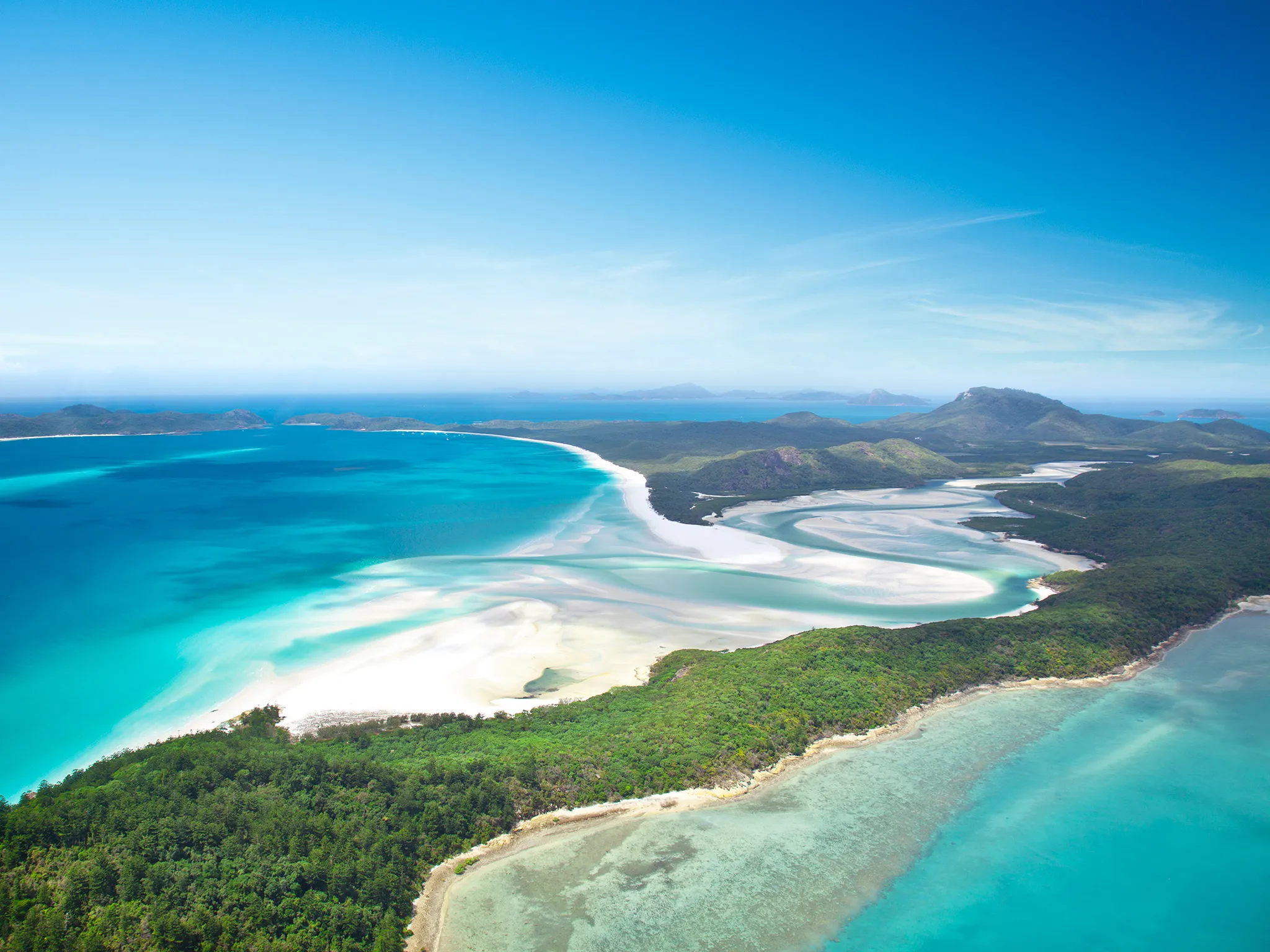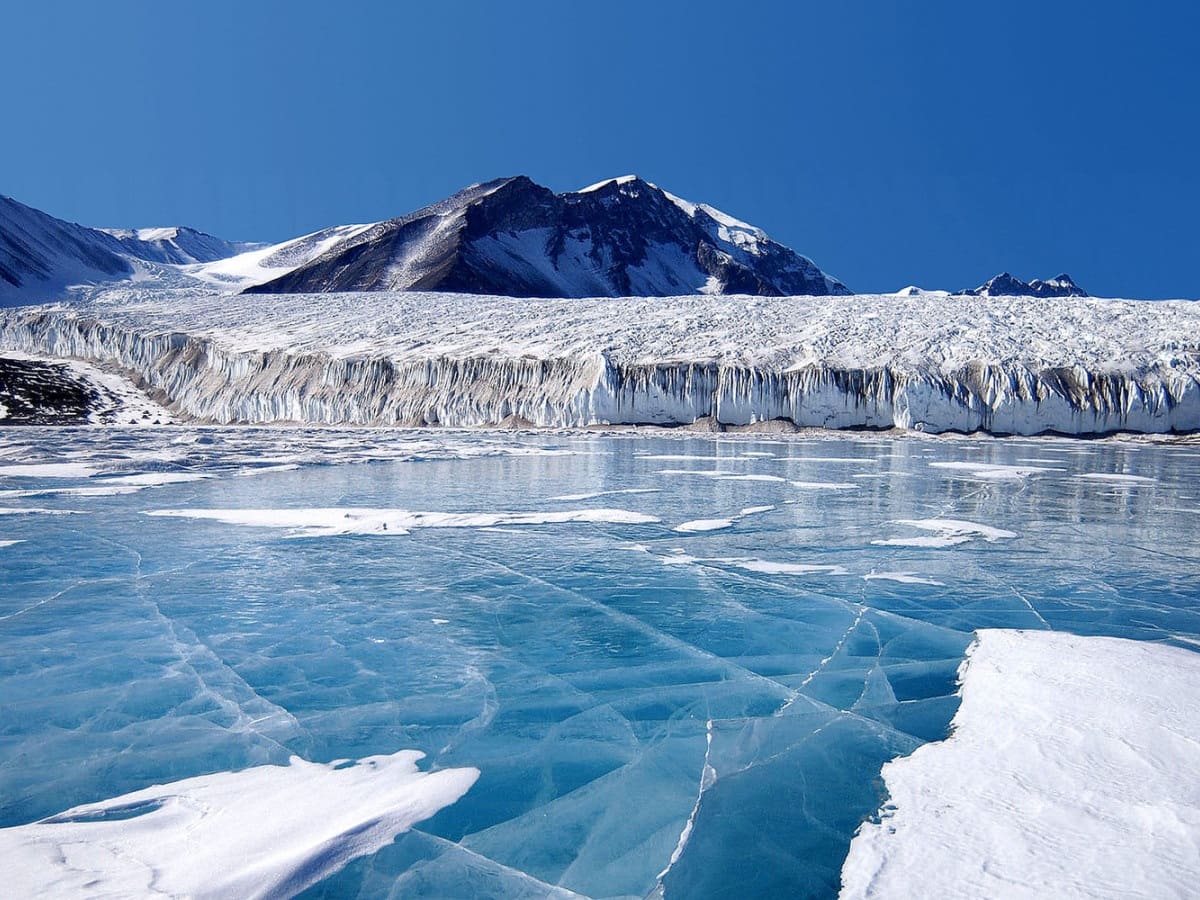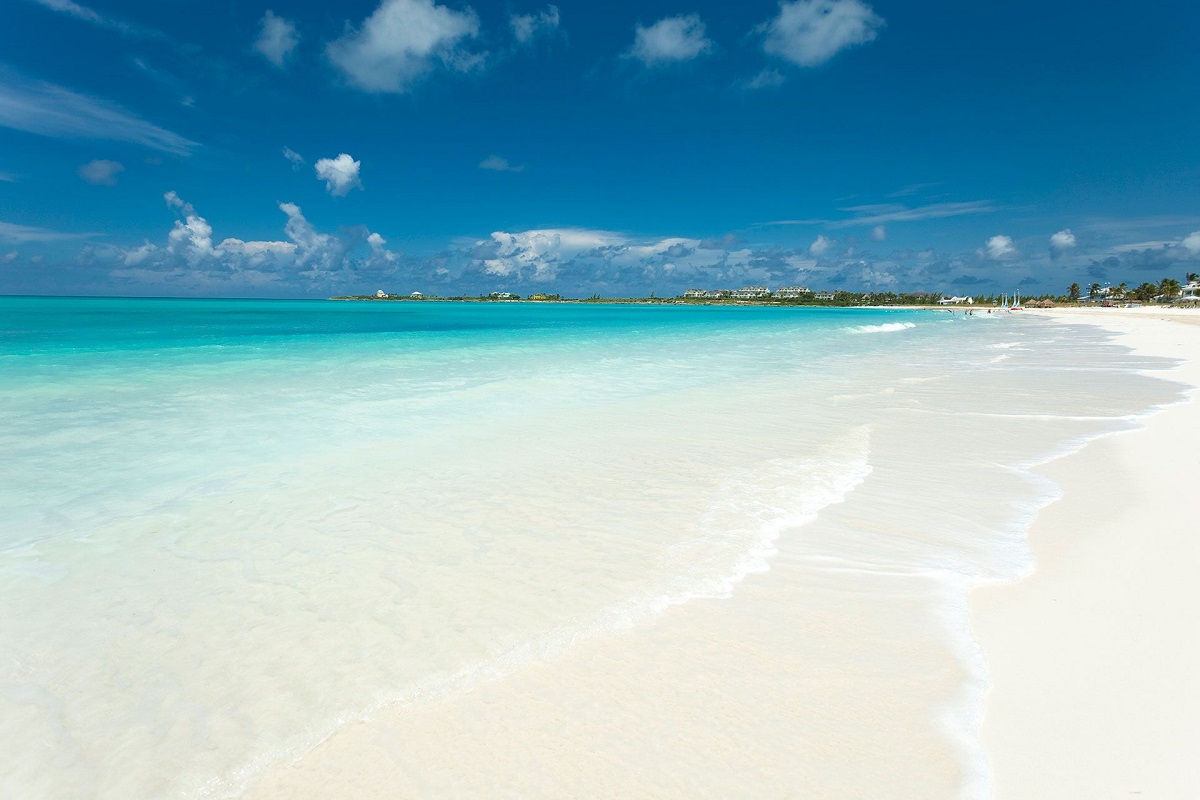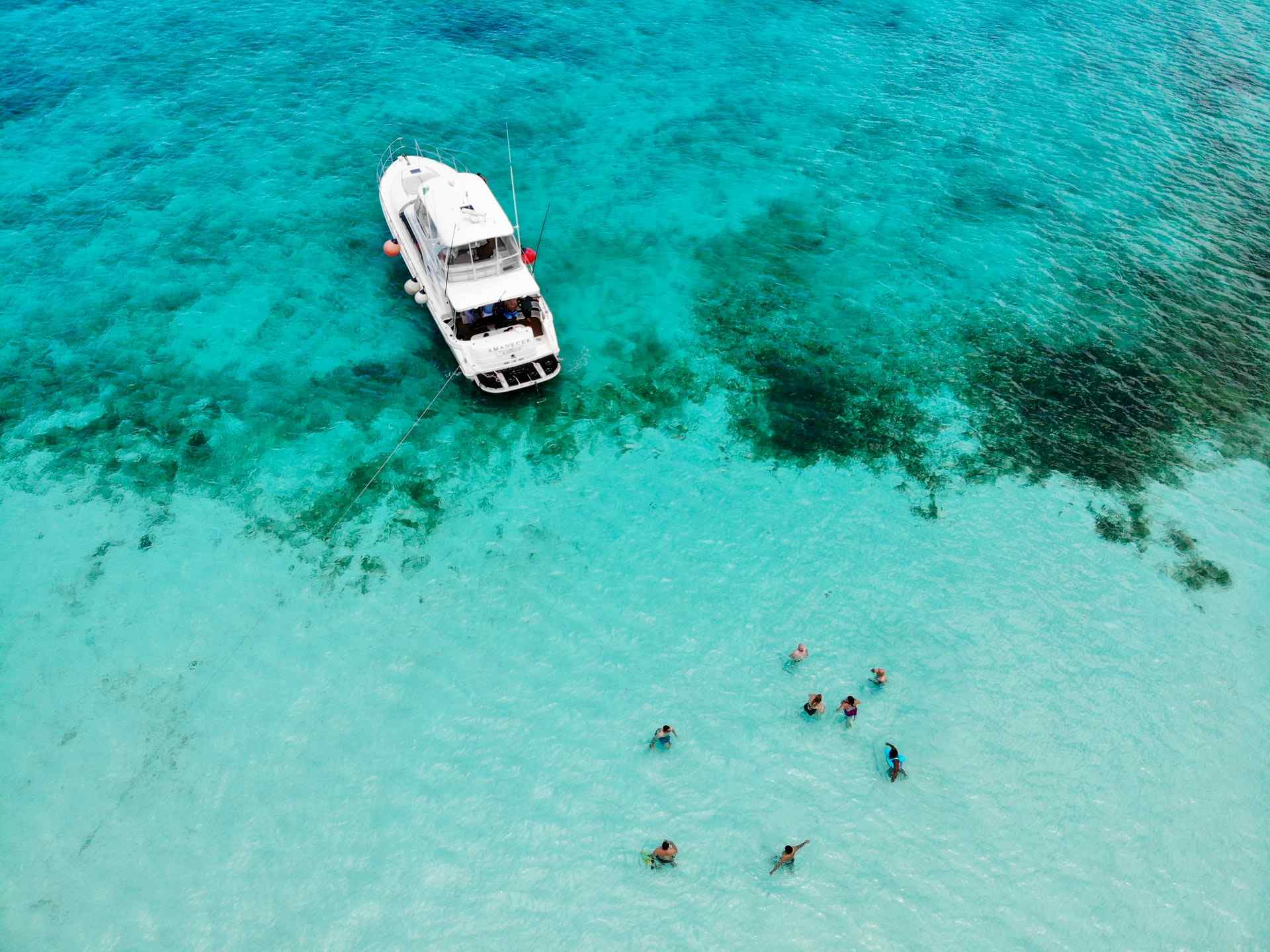Home>Science & Environment>Understanding Water Temperature For Swimming And Aquatic Life
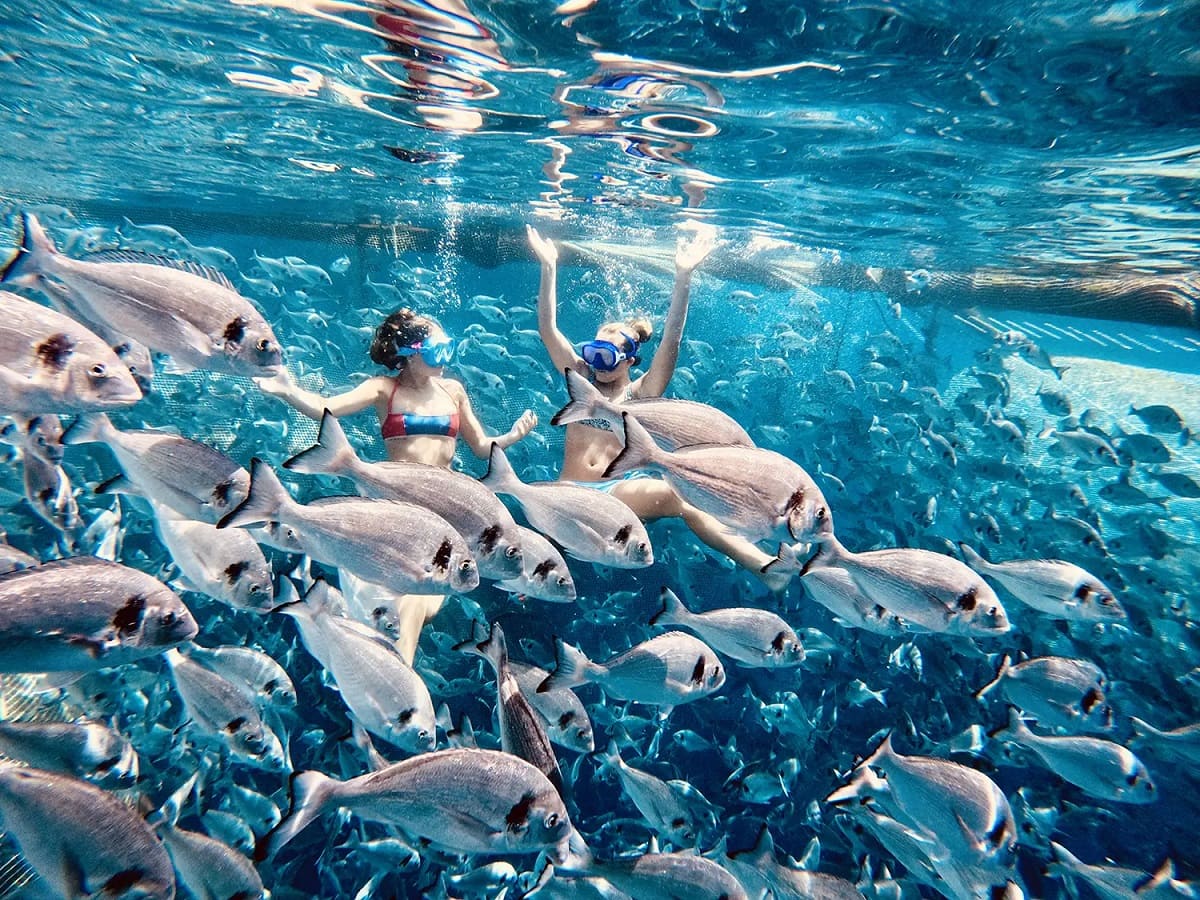

Science & Environment
Understanding Water Temperature For Swimming And Aquatic Life
Published: February 19, 2024
Explore the impact of water temperature on swimming and aquatic life with insights from the science and environment experts. Understand the significance of temperature for optimal performance and sustainability.
(Many of the links in this article redirect to a specific reviewed product. Your purchase of these products through affiliate links helps to generate commission for Temperatures.com, at no extra cost. Learn more)
Table of Contents
Importance of Water Temperature in Swimming
Water temperature plays a crucial role in determining the overall swimming experience. Whether you are a casual swimmer or a competitive athlete, understanding the significance of water temperature is essential for a safe and enjoyable aquatic activity.
-
Comfort and Safety: The water temperature directly impacts the comfort and safety of swimmers. Water that is too cold can lead to discomfort, muscle stiffness, and even hypothermia, especially during prolonged exposure. On the other hand, excessively warm water can cause overheating and dehydration. Therefore, maintaining an optimal water temperature is vital to ensure the well-being of swimmers.
-
Performance: For competitive swimmers, water temperature can significantly affect performance. Cold water can lead to decreased muscle flexibility and increased energy expenditure as the body works to maintain its core temperature. Conversely, excessively warm water can lead to fatigue and reduced endurance. Therefore, finding the right balance in water temperature is crucial for achieving peak performance in swimming competitions.
-
Health Benefits: Swimming in water with an appropriate temperature offers various health benefits. It can improve circulation, enhance cardiovascular health, and promote overall well-being. Additionally, swimming in comfortably cool water can be invigorating and refreshing, making it an ideal form of exercise for many individuals.
-
Recreational Enjoyment: Whether swimming in a pool, lake, or ocean, the water temperature directly impacts the overall recreational experience. Optimal water temperature ensures that swimmers can enjoy their time in the water without discomfort or adverse health effects. It also encourages individuals to engage in regular swimming activities, promoting a healthy and active lifestyle.
-
Learning and Training: For beginners and swimming enthusiasts undergoing training, water temperature is a critical factor. Comfortable water temperature fosters a conducive environment for learning and skill development. It allows swimmers to focus on technique and endurance without being hindered by extreme temperatures.
In essence, water temperature is a fundamental aspect of swimming that influences comfort, safety, performance, health benefits, and overall enjoyment. Whether swimming for leisure, exercise, or competition, understanding and managing water temperature is essential for a fulfilling and rewarding aquatic experience.
The Impact of Water Temperature on Aquatic Life
The temperature of aquatic environments profoundly influences the behavior, physiology, and ecological dynamics of various marine and freshwater species. Fluctuations in water temperature can have far-reaching effects on the intricate balance of aquatic ecosystems, impacting the distribution, reproduction, and survival of diverse organisms.
Effects on Marine Life
In marine ecosystems, water temperature plays a pivotal role in shaping the distribution and abundance of species. Many marine organisms, including fish, invertebrates, and marine mammals, exhibit specific temperature preferences for feeding, reproduction, and migration. For instance, certain fish species are highly sensitive to temperature variations, influencing their spawning patterns and larval survival. Additionally, marine mammals such as whales and dolphins rely on specific temperature ranges for foraging and breeding activities.
Impact on Freshwater Ecosystems
In freshwater environments, water temperature directly affects the metabolic rates and behavior of aquatic organisms. Temperature fluctuations can alter the dissolved oxygen levels in water, impacting the survival of fish and other aquatic species. Furthermore, temperature changes can disrupt the timing of critical life stages, such as the emergence of aquatic insects and the spawning of freshwater fish. These disruptions can have cascading effects on the entire food web of freshwater ecosystems.
Thermal Pollution
Human activities, such as industrial processes and power generation, can lead to thermal pollution, causing a rise in water temperature in aquatic habitats. Elevated water temperatures can disrupt the ecological balance by reducing oxygen solubility and altering the behavior of aquatic organisms. Thermal pollution poses a significant threat to aquatic life, leading to habitat degradation and potential declines in biodiversity.
Coral Bleaching
Rising water temperatures, attributed to climate change, pose a severe threat to coral reefs. Elevated sea surface temperatures can trigger coral bleaching, a phenomenon where corals expel the symbiotic algae living in their tissues, leading to widespread coral mortality. Coral bleaching not only impacts the intricate biodiversity of coral reef ecosystems but also jeopardizes the livelihoods of communities reliant on these valuable marine habitats.
Adaptation and Resilience
Despite the challenges posed by fluctuating water temperatures, many aquatic species exhibit remarkable adaptations to cope with environmental changes. Some fish species, for example, can adjust their metabolic rates and behavior in response to varying water temperatures. Additionally, certain aquatic organisms have evolved thermal tolerance mechanisms to withstand extreme temperature fluctuations, showcasing the resilience of aquatic life in the face of environmental challenges.
In essence, water temperature exerts a profound influence on the intricate web of aquatic life, shaping the distribution, behavior, and ecological interactions of diverse marine and freshwater species. Understanding the impact of water temperature on aquatic ecosystems is crucial for conservation efforts and sustainable management of these invaluable natural resources.
Factors Affecting Water Temperature in Natural Bodies of Water
The temperature of natural bodies of water, including lakes, rivers, and oceans, is influenced by a myriad of factors that contribute to the dynamic thermal conditions of aquatic environments. Understanding these factors is essential for comprehending the complex interplay of natural processes that govern water temperature. Here are the key factors affecting water temperature in natural bodies of water:
1. Solar Radiation
Solar radiation is a primary driver of water temperature in natural aquatic systems. The amount of sunlight reaching the water's surface directly influences its heat absorption. In regions with abundant sunlight, such as tropical zones, water temperatures tend to be warmer due to intense solar radiation. Conversely, in polar regions with limited sunlight, water temperatures are generally colder.
2. Seasonal Variations
Seasonal changes play a significant role in shaping water temperature patterns. During the summer months, increased solar radiation leads to higher water temperatures, while winter months bring cooler temperatures. These seasonal fluctuations impact the thermal stratification of lakes and the overall temperature dynamics of rivers and oceans.
3. Depth and Thermal Stratification
The depth of natural bodies of water contributes to temperature variations. In lakes, thermal stratification occurs when the water column separates into distinct layers based on temperature. The surface layer, known as the epilimnion, is warmed by sunlight, while the colder hypolimnion layer remains at the bottom. This stratification influences the overall temperature profile of the lake and affects the distribution of aquatic organisms.
4. Water Flow and Circulation
The flow and circulation of water within rivers and oceans play a crucial role in regulating water temperature. River currents can transport warmer or cooler water from different sources, impacting the overall temperature of the river system. Similarly, ocean currents influence the distribution of warm and cold water masses, shaping the temperature patterns of marine ecosystems.
5. Geographic Location and Climate
The geographic location and climate of a region significantly impact water temperature. Coastal areas experience moderating effects from the ocean, leading to relatively stable water temperatures. Inland water bodies, on the other hand, are more susceptible to rapid temperature changes influenced by local climate conditions.
6. Human Activities and Land Use
Human activities, such as urbanization, deforestation, and agricultural practices, can indirectly affect water temperature in natural bodies of water. Runoff from urban areas and agricultural lands can introduce pollutants and alter the thermal characteristics of water bodies, leading to localized temperature changes and ecological impacts.
7. Climate Change
The overarching influence of climate change is altering water temperature dynamics in natural bodies of water. Rising global temperatures are leading to shifts in aquatic ecosystems, impacting the thermal regimes of lakes, rivers, and oceans. These changes have far-reaching implications for aquatic biodiversity and ecosystem functioning.
In summary, the interplay of solar radiation, seasonal variations, depth, water flow, geographic location, human activities, and climate change collectively shape the intricate thermal dynamics of natural bodies of water. Understanding these factors is crucial for assessing the vulnerability of aquatic ecosystems to changing water temperatures and implementing effective conservation and management strategies.
How Water Temperature Affects Swimmers
Water temperature exerts a profound influence on swimmers, impacting their comfort, performance, and overall aquatic experience. Whether swimming in a pool, lake, or ocean, the temperature of the water significantly affects swimmers in various ways.
Comfort and Safety
The water temperature directly influences the comfort and safety of swimmers. When the water is too cold, swimmers may experience discomfort, muscle stiffness, and even the risk of hypothermia, especially during prolonged exposure. On the other hand, excessively warm water can lead to overheating and dehydration. Therefore, maintaining an optimal water temperature is crucial to ensure the well-being of swimmers and minimize the potential risks associated with extreme temperatures.
Performance
For competitive swimmers, water temperature plays a pivotal role in determining performance. Cold water can lead to decreased muscle flexibility and increased energy expenditure as the body works to maintain its core temperature. This can impact stroke efficiency and overall speed. Conversely, excessively warm water can lead to fatigue and reduced endurance. Finding the right balance in water temperature is essential for achieving peak performance in swimming competitions.
Physiological Response
Swimmers experience physiological responses to water temperature variations. Cold water immersion triggers vasoconstriction, where blood vessels constrict to conserve heat, potentially impacting circulation and oxygen delivery to muscles. In contrast, warm water can lead to increased perspiration and the risk of dehydration. Understanding these physiological responses is crucial for swimmers to adapt and prepare for the specific challenges posed by different water temperatures.
Acclimatization and Adaptation
Swimmers often engage in acclimatization practices to adapt to varying water temperatures. This process involves gradually exposing the body to colder or warmer water to stimulate physiological adjustments. Cold water acclimatization, for example, can enhance cold tolerance and improve the body's ability to maintain core temperature during swimming. Similarly, acclimatization to warmer water can help swimmers cope with higher temperatures and optimize performance.
Psychological Factors
Water temperature can also influence the psychological aspect of swimming. Cold water immersion may evoke a sense of exhilaration and invigoration, while warm water can create a relaxing and soothing environment. Understanding the psychological impact of water temperature is essential for swimmers to mentally prepare and adapt to the specific sensory experiences associated with different water temperatures.
In essence, water temperature significantly affects swimmers, encompassing aspects of comfort, safety, performance, physiological responses, acclimatization, and psychological factors. Recognizing the multifaceted influence of water temperature is essential for swimmers to optimize their aquatic experiences and ensure a safe and enjoyable swimming environment.
Read more: Monthly Destin Water Temperature Guide
Adapting to Different Water Temperatures for Swimming
Adapting to different water temperatures is a crucial aspect of swimming, particularly for individuals who engage in aquatic activities across a range of environments. Whether transitioning from a heated pool to an open water swim or preparing for competitive events in varying water conditions, swimmers must effectively adapt to the temperature of the water to optimize their performance and ensure their well-being.
Cold Water Adaptation
Swimming in cold water presents unique challenges that require deliberate adaptation strategies. Cold water immersion initially triggers a shock response, leading to rapid breathing and increased heart rate. To adapt to cold water swimming, gradual exposure and acclimatization are essential. Swimmers can progressively increase their exposure to colder water, allowing the body to adapt and develop cold tolerance. This process stimulates physiological adjustments, such as improved circulation and enhanced thermal regulation, enabling swimmers to withstand lower water temperatures more effectively.
Additionally, cold water swimmers often utilize specific techniques to conserve body heat and maintain core temperature. Wearing appropriate cold-water gear, such as wetsuits, helps insulate the body and minimize heat loss. Furthermore, engaging in pre-swim warm-up exercises and maintaining continuous movement while swimming can aid in generating internal heat and reducing the impact of cold water on muscle flexibility.
Warm Water Acclimatization
Adapting to swimming in warm water also requires deliberate preparation and acclimatization. In warmer aquatic environments, swimmers may encounter challenges related to heat stress and dehydration. To adapt to warm water conditions, swimmers can gradually expose themselves to higher temperatures, allowing the body to adjust and optimize its thermoregulatory mechanisms. This process facilitates the development of heat tolerance and enhances the body's ability to cope with the physiological demands of swimming in warmer water.
Hydration plays a critical role in adapting to warm water swimming. Swimmers must prioritize proper hydration before, during, and after swimming to mitigate the risk of dehydration and maintain optimal performance. Additionally, incorporating cooling strategies, such as taking brief water breaks and utilizing cooling aids, can help manage body temperature and enhance comfort during warm water swims.
Flexibility and Versatility
Swimmers who navigate diverse aquatic environments benefit from cultivating flexibility and versatility in adapting to different water temperatures. Developing the ability to transition seamlessly between cold and warm water conditions enhances a swimmer's adaptability and resilience. This adaptability is particularly valuable for individuals participating in open water swimming events, where water temperatures can vary significantly based on location and seasonal changes.
In essence, adapting to different water temperatures for swimming encompasses a multifaceted approach that integrates physiological adjustments, acclimatization strategies, and environmental considerations. By honing the ability to adapt to varying water temperatures, swimmers can optimize their performance, ensure their safety, and embrace the diverse challenges and rewards offered by different aquatic environments.


